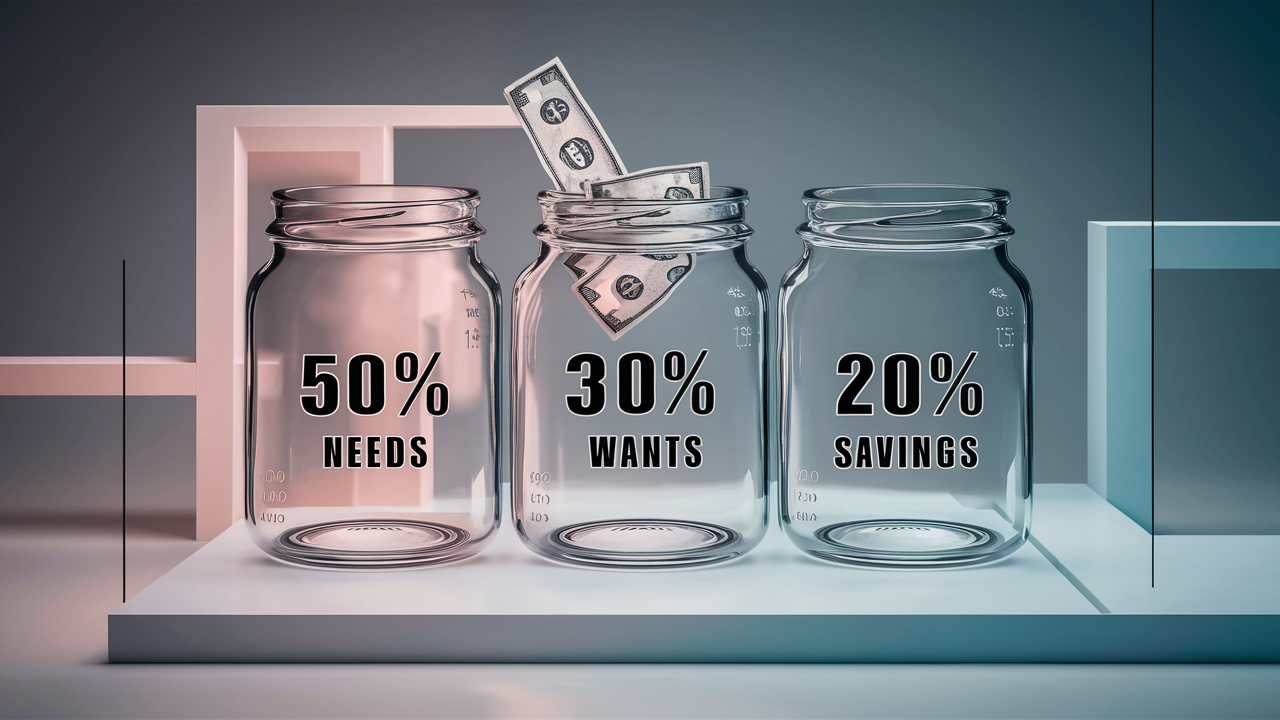-
Posted on: 15 Jul 2024

-
The 50-30-20 rule is a specific structure of a diet that is considered to be optimal for people who want to eat healthy and avoid gaining extra pounds.
The 50 30 20 rule is a simple technique used in the management of finances, in the enhancement of spending habits, and in the generally effective of budgeting. As the name suggests, it divides spending into three categories: prompted by necessities, desires, and those paying off savings/credits. Here is a breakdown of the key components: Here is a breakdown of the key components:
50% - Needs
This is all the expenditure required to meet the basic needs of living and carrying out their functions. The recommended 50% allocation goes towards expenses like The recommended 50% allocation goes towards expenses like:- Rent/Mortgage and Other Utilities such as Insurance, Taxes, Water and Electricity bills among others.
- Most of the purchases were groceries and the most fundamental foods that people need for survival.
- Transportation (car loan payment, fuel, minor car repairs and maintenance, bus fare/ train fares etc).
- Healthcare expenditures related to basic services such as health insurance, medicines, and other charges.
- Minimum debt payments
- Essentials such as the pieces of clothing one wears and other personal products one uses.
When needs are kept at 50%, it is guaranteed that basic requirements in an individual’s lifestyle are met before going for the wants part. This component brings all fixed cost figures into account.
30% - Wants
The wants category as the name suggests is the expenditure which is not necessary but is considered important in supporting the desires of an individual. With the recommended 30% allocation, this includes expenses like With the recommended 30% allocation, this includes expenses like:- Restaurant eating and takeaway
- Fun and leisure and other interpersonal interests
- Pay TV services and other media services
- Vacations and travel
- Gifts and donations
- Progression up the needs, (better clothing, better car, better food, etc.).
This means that by applying the 30% rule on wants, one can achieve a viable lifestyle expenditure without reaching the limit of the given budget. These articles bring pleasure and live quality within the achievable means.
20 % – Savings & Debts
The last 20% is used for two important objectives – building an emergency fund and reducing the debt more actively. Specifically, the recommended 20% allocation includes: Specifically, the recommended 20% allocation includes:- Having 3-6 months of an emergency fund or a cash reserve or any other financial cushion to fall back on.
- Employer-funded contribution (401k, Roth IRA, etc.).
- College and other savings goals These financial goals are important for families who have children of pre-college age.
- Supplementary payments to reduce interest and elongated credit periods
It is good to save and also make some gains concerning any financial planning for the future. It automatically gets 20% of the budget which makes it very significant in any company’s financial planning. It mandates saving and repayment of the loan instead of having the change left.
An outline of how the 50:30:20 rule operates is discussed below:
This budgeting system works by following three steps each month: This budgeting system works by following three steps each month:1. total of all the gross net (after tax) income received every month
2. Next to every expense, define whether it is necessary, luxury, or savings/debt.
3. Add up the percentage in each group so that you can easily reallocate your spending and saving patterns.The strength is in the plan of making 50% conscious spending for the necessary items in life, 30% for the desired items and the remaining 20% going to savings by default. It gives a standard rule together with ceilings to nonnutritive expenditure. In the long run, following this rule helps one manage their tendency to spiral out-to-eat and there is more money.
Advantages of Using 50 30 20 Budget Strategy
When used properly, the 50 30 20 budget has many benefits: When used properly, the 50 30 20 budget has many benefits:- Fosters a conscious approach towards spending on wants and needs more than on anything else.
- Savings are important to channel every coin in the right direction so that wealth can be accumulated over time.
- Variation in the range of products each month within these categories
- Simple percentages help to monitor the changes
- Can assist in defining parts of the expenses that can be reduced in case of necessity.
- Builds a consciousness of how one’s standard of living has been eroded.
In conclusion, it can be stated that this approach of maintaining the balance between public investment in infrastructure and the provision of subsidies for enterprises ensures the formation of a stable financial base for the long term. While still enjoying life, saving, investing, and paying off the debts much faster protects from unexpected circumstances. What makes it a perfect budget model for many households is that it’s relatively easy to implement.
Call now for expert credit repair services: (888) 803-7889
Read More:
What is the fastest way to rebuild credit?
How to boost credit score immediately?
Is it illegal to pay for delete?










